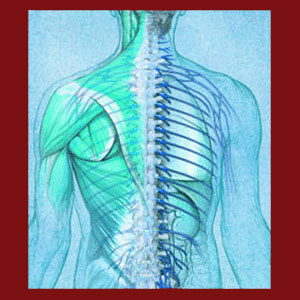
There is no guaranteed permanent cure for facet joint syndrome, since spinal degeneration will continue for life and might create new symptoms at some point. However, there are certainly cures available that will work and the benefits of these may endure for life.
When it comes to finding a cure for facet joint pain, or any type of chronic pain, it is crucial to pursue curative care and not symptomatic treatment. We regularly receive correspondence from patients who ask why they still have pain if they have been using drugs, going for chiropractic or taking massages for years. These people are clueless, but not unsavable. It is our job to help them to learn the difference between curative and symptom-targeting care and their job to make better informed decisions on their therapy.
This dialog explores the types of treatment that can actually cure facet joint symptoms. Since there are only 2 real options, we will discuss each in detail in the sections below, as well as provide an equally important final section explaining why so many patients can not find a cure, despite pursuing the recommended treatments detailed here.
Nonsurgical Facet Joint Syndrome Cure
When it comes to curing facet joint syndrome pain without surgery, the gold standard treatment is spinal decompression. There are many devices which can be utilized, including DRX9000, Vax-D, Hill DT, Antalgic Trak and AccuSpina, as well as the venerable Cox Technic.
Spinal decompression is best suited for pain caused by disc conditions and features the very best curative results for resolving degenerated and herniated discs. However, results for treating facet joint pain are acceptable to good and since the therapy has very little risk, many patients give it a try and find a cure without having to undergo an operation.
The primary positive point of spinal decompression is the ability to avoid spinal surgery. Another benefit is that treatment does not contraindicate any other type of care now or in the future should decompression fail. Finally, spinal decompression can also be used to simultaneously treat disc issues which might exist in proximity to the painful facet joint for therapeutic synergy.
The downsides of nonsurgical spinal decompression include its large time commitment, high cost and no guarantee that it will work given the above investments…
Curing Facet Syndrome with Surgery
There are many variations on spinal surgery that can correct painful facet joints, usually with minimally invasive care. Facet syndrome that is verified as the symptomatic cause can typically be easily treated successfully, providing a cure that may last forever or at least a very long time in most instances.
Spinal surgery is always risky and damaging. It is nothing to be taken lightly. There are serious risks and some people are permanently injured during their operation, while others actually die. Never allow any care provider to say that their procedure is nothing to worry about, because this is a lie…
That being said, serious complications are rare in facet joint surgery and are almost always avoidable, given an experienced doctor. Better still, the recovery time for most procedures is not long and the aftercare is not intensive.
One caveat to note is that many surgeons will “up-sell” facet joint techniques to address multiple spinal abnormalities, even when these conditions are asymptomatic. Common add-ons include discectomy, laminectomy and other techniques, including dreaded spinal fusion. In a few cases, these additions are prudent and even excellent. However, in most cases, these tactics are used simply to increase the monetary value of the procedure for the surgeon and care staff. You have been warned…
Why Would a Facet Joint Syndrome Cure Fail?
Curative care for facet joint pain sometimes fails. In a few instances, this is because of errors on the part of the caregiver or factors that relate to the patient’s overall health and wellness. However, the most common reason for a facet joint syndrome cure to fail is misdiagnosis.
Misdiagnosis is a huge problem in the back and neck pain treatment industry where many incidental structural conditions are wrongly implicated as the source of chronic pain. The facet joints are definitely included in the top offenders, since everyone will demonstrate marked facet joint degeneration as adults in areas of flexibility in the spine (mainly the mid to lower neck and the lower back).
When curative care fails, 95% of the time, it is because of misdiagnosis,. This is why we started this essay with the disclaimer about verified facet joint pain, as opposed to theorized facet joint pain. We highly, highly recommend that all patients seek out a second opinion on the cause of their pain before seeking any type of care and integrate knowledge therapy into their care plan to address the common occurrence of mindbody pain which requires no medical treatment at all.
Facet Joint Pain > Facet Syndrome Relief > Facet Joint Syndrome Cure





